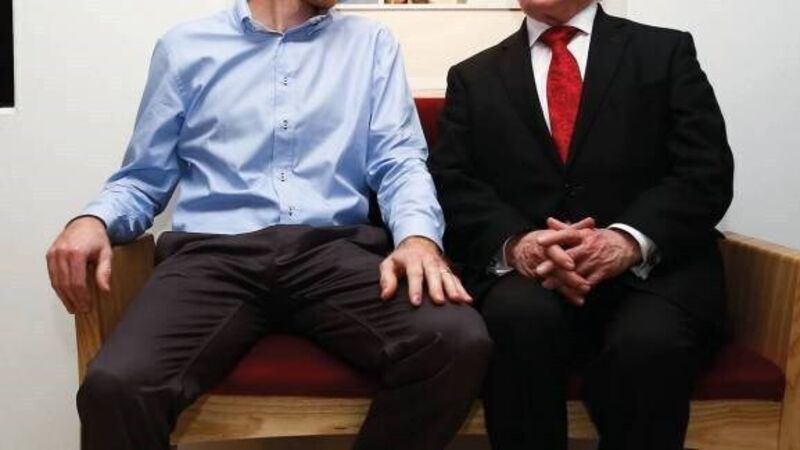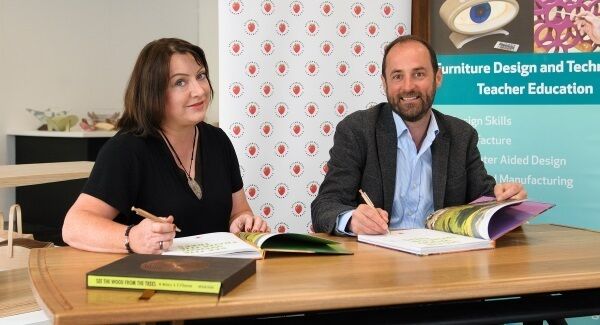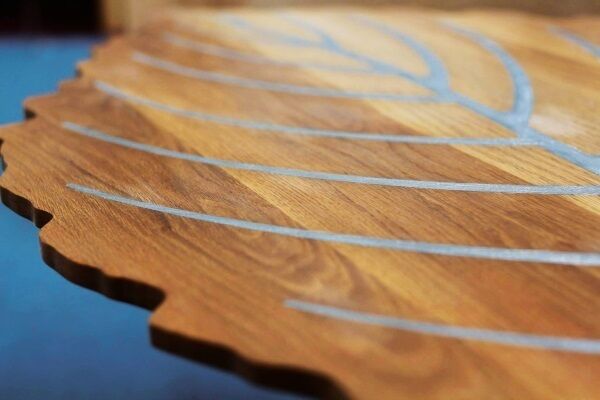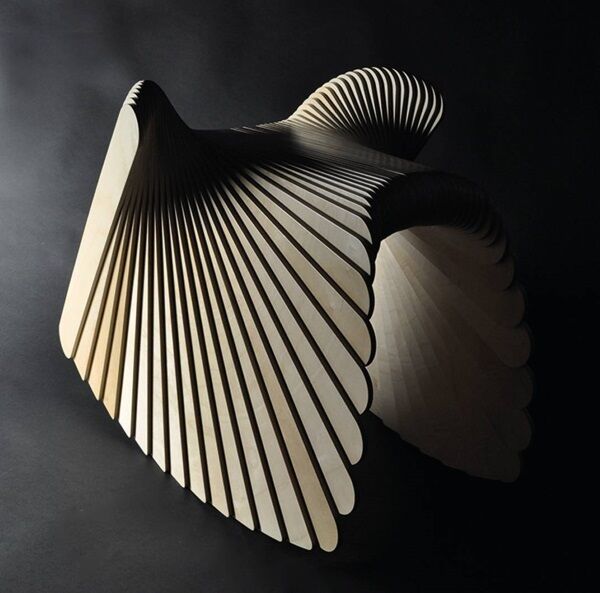How the lives of trees at Áras an Uachtaráin did not end when they were felled in storms

A new book details how the lives of trees at Áras an Uachtaráin did not end when they were felled in storms, writes
It’s not everyone who can say the President of Ireland has provided the foreword to a book they have written.

Two people who can lay claim to that honour are Dr Marion McGarry and Dermot O’Donovan, staff members of the National Centre of Excellence for Furniture Design and Wood Technology, at Galway-Mayo Institute of Technology (GMIT) Letterfrack.
Their book, See The Wood From The Trees, which was launched last week, documents the story of oak, ash, and beech trees at Áras an Uachtaráin that were felled by storms in Áras an Uachtaráin and gifted by President Michael D Higgins and wife Sabina to GMIT Letterfrack for use by students.
As a backdrop to this, the book gives a brief history of trees in Ireland as well as the history of Áras an Uachtaráin. Included also is the story of how a partnership between Connemara West and GMIT in 1987 led to Letterfrack Industrial School being transformed into ‘the furniture college’, now known as GMIT Letterfrack.
Dermot O’Donovan, head of centre at GMIT Letterfrack, explains that the timber gifted by the President was transported onto the campus, dried, and let sit for two years before the students used it.
They then made and designed corporate gifts for the President to give to dignitaries. A second project undertaken with the wood was the creation of a trail on campus for use by the community, which Mr Higgins opened for them.
O’Donovan says: “That was the real rich part seeing the full cycle of the trees: From being destroyed in the storm — some of them were 250 years old — and then being transported here and preserved in a way that they were then going to be something for use by the community.”
The book happened organically, says McGarry, with both she and O’Donovan mentioning it to each other at the same time about three years.
Over time they gathered images for the book, with the main body of work completed in the last year. They approached Artisan House, based next to them in Connemara, to publish it, who were based next to them in Connemara.
McGarry and O’Donovan are hugely complimentary of the assistance given by Vincent Murphy and Mary Ruddy who run the small publishing house.
Mr Higgins’ own connection with the campus precedes his presidency, Letterfrack being a part of his constituency when he was a TD for Galway West.

In his foreword, he recalls the strong connection between the Áras and this small campus on the west coast of Ireland. Three lecterns in the Áras and the presidential inauguration chair were crafted by students and graduates of GMIT Letterfrack.
In addition, lecturer Paul Leamy crafted the presentation boxes for artist Vivienne Roche’s ‘climate bells’ which the President has presented to Prince Charles and heads of state such as Pope Francis
Prince Charles.
The President writes:
“They, like all of the pieces designed in Letterfrack, are not just beautiful objects in themselves. They represent portals into a past that has shaped and formed our contemporary moment, and into a shared heritage and culture which, in its recall, is available to inspire and influence the vision of an exciting and increasing new generation of talented artists.”
It is fitting that this book, which also not only celebrates the work of GMIT Letterfrack but promotes a strong message on eco-friendly practices in construction and design, would include an introduction from architect and broadcaster
Duncan Stewart.
He knits together the setting of GMIT Letterfrack, with the potential of its role in promoting sustainable woodlands.
He writes: “Forestry is pivotal to the livelihood and wellbeing of communities in rural Ireland. The authors remind us too of the role that trees play in mitigating climate change, the greatest challenge facing our planet today.”
It is in this message for greater awareness and action around climate change that Stewart is most supportive of the work of GMIT Letterfrack.
He says: “Students are involved in all aspects of wood, from the planting and care of new trees, cutting and drying of mature trees, and finally in the creative process as students take that raw material and transform it into beautiful furniture and wooden objects.”
Interwoven throughout the book are visuals of student and graduate work from the campus, as well as poetry about nature and trees. McGarry says the idea to include poetry came from the publishers: “The poetry lends it a bit more depth. We wanted to get into the whole meaning of trees in an Irish context.”
Centre-stage is the inclusion of ‘The Farmleigh Tree Alphabet’, a poem by Theo Dorgan. It is based around the Gaelic alphabet which had 18 letters, each one associated with a tree.
Dorgan’s poem neatly ties in with the history of trees in Ireland detailed in the book.
McGarry explains: “The book outlines the once important part that forests played in Irish life: they were legislated for in Brehon Laws and trees inspired much of the Ogham alphabet.

"However, wholesale destruction led ultimately to the poignant loss of the ancient Irish forests from the 17th century, and along with it the loss of Irish understanding of trees and forests and of timber craft and wood skills. It was only at the beginning of the 20th century that we began to see some renewal, but Ireland remains the least forested area in Europe.”
McGarry is a historian of art, design, and architecture, specialising in Irish material culture and identity. For her, the message she wants to convey to readers about GMIT Letterfrack is the wonderful reputation it has built for itself in its 30 years of existence.
“I want the book to give tangibility to that, for, alongside the story of the Áras timber, it shows examples of student and graduate work, tells our story and what we do.
"In terms of woodcraft skills, I see GMIT Letterfrack playing a vital role in the revival of these skills amongst our graduates and the people who consume the products they make.
“We not only nurture their design skills but really encourage their understanding of materials. Sustainability is also a huge issue, so we teach them to choose materials carefully, to use environmentally friendly manufacturing processes and materials, and to think of the afterlife of the products.”
O’Donovan, who originally hails from Cork but who has been working on the campus for the last 20 years, says:
“We’re probably the smallest third-level campus in the country. We’re unique — we’re in a remote area and that has its challenges but at the same time, we’re highly specialised and the students when they come here get a rich opportunity to have a really diverse learning, and we’re always looking to the outside world for collaboration.
“There’s something really beautiful and inspiring about the Connemara landscape and to have a third-level college here, to have it embedded in the community with a community organisation as we are with Connemara West, there’s a model there that shows that rural life can be sustained if you have the right ingredients”.











